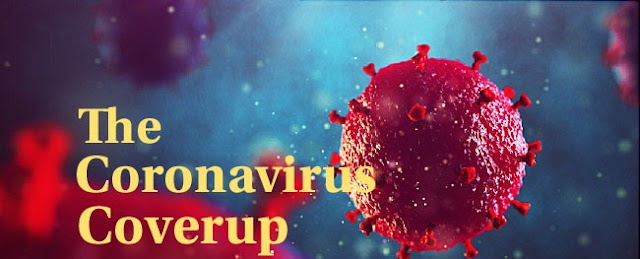Bluetooth
Abstract
This assignment is about a popular electronics device that we all have and use. It is about Bluetooth here we are going to find out how it works , which are the places it is being used , and much more.
Bluetooth
is a well-known, short-range technology for Wireless Personal Area Networks
(WPAN). Starting from a headset cable replacement it has been extended to
support flexible ad-hoc networks.. For making the developers’ work easier it
has been produced different Bluetooth development platforms. These development
platforms have different purposes and capabilities. The purpose of this thesis
was to demonstrate and study Bluetooth technology and Bluetooth application
development
Literature review:
The development of the "short-link" radio technology, later named Bluetooth, was initiated in 1989 by Nils Rydbeck, CTO at Ericsson Mobile in London, Sweden and by Johan Ullman. The purpose was to develop wireless headsets, according to two inventions by Johan Ullman, SE 8902098-6, issued 1989-06-12 and SE 9202239, issued 1992-07-24. Nils Rydbeck tasked TordWingren with specifying and Jaap Haartsen and Sven Mattisson with developing. Both were working for Ericsson in London. The specification is based on frequency-hopping spread spectrum technology.
The name "Bluetooth" is an Anglicised version of the Scandinavian Blåtand/Blåtann (Old Norseblátǫnn), the epithet of the tenth-century king Harald Bluetooth who united dissonant Danish tribes into a single kingdom. The implication is that Bluetooth unites communication protocols.
The idea of this name was proposed in 1997 by Jim Kardach of Intel who developed a system that would allow mobile phones to communicate with computers. At the time of this proposal he was reading Frans G. Bengtsson's historical novel The Long Ships about Vikings and King Harald Bluetooth.
Introduction
Bluetooth is a wireless technology standard for exchanging data over short distances (using short-wavelength UHF radio waves in the ISM band from 2.4 to 2.485 GHz) from fixed and mobile devices, and building personal area networks (PANs). Invented by Dutch electrical engineer Jaap Haartsen, working for telecom vendor Ericsson in 1994 it was originally conceived as a wireless alternative to RS-232 data cables.
Bluetooth is managed by the Bluetooth Special Interest Group (SIG), which has more than 30,000 member companies in the areas of telecommunication, computing, networking, and consumer electronics. The IEEE standardized Bluetooth as IEEE 802.15.1, but no longer maintains the standard. The Bluetooth SIG oversees development of the specification, manages the qualification program, and protects the trademarks. A manufacturer must meet Bluetooth SIG standards to market it as a Bluetooth device. A network of patents apply to the technology, which are licensed to individual qualifying devices
Uses of Bluetooth
Bluetooth is a standard wire-replacement communications protocol primarily designed for low power consumption, with a short range based on low-cost transceivermicrochips in each device Because the devices use a radio (broadcast) communications system, they do not have to be in visual line of sight of each other; however, a quasi-optical wireless path must be viable.Range is power-class-dependent, but effective ranges vary in practice. See the table "Ranges of Bluetooth devices by class".
Officially Class 3 radios have a range of up to 1 metre (3 ft), Class 2, most commonly found in mobile devices, 10 metres (33 ft), and Class 1, primarily for industrial use cases,100 metres (300 ft). Bluetooth Marketing qualifies that Class 1 range is in most cases 20–30 metres (66–98 ft), and Class 2 range 5–10 metres (16–33 ft). The actual range achieved by a given link will depend on the qualities of the devices at both ends of the link, as well as the air conditions in between, and other factors.
The effective range varies depending on propagation conditions, material coverage, production sample variations, antenna configurations and battery conditions. Most Bluetooth applications are for indoor conditions, where attenuation of walls and signal fading due to signal reflections make the range far lower than specified line-of-sight ranges of the Bluetooth products.
Most Bluetooth applications are battery-powered Class 2 devices, with little difference in range whether the other end of the link is a Class 1 or Class 2 device as the lower-powered device tends to set the range limit. In some cases the effective range of the data link can be extended when a Class 2 device is connecting to a Class 1 transceiver with both higher sensitivity and transmission power than a typical Class 2 device. Mostly, however, the Class 1 devices have a similar sensitivity to Class 2 devices. Connecting two Class 1 devices with both high sensitivity and high power can allow ranges far in excess of the typical 100m, depending on the throughput required by the application. Some such devices allow open field ranges of up to 1 km and beyond between two similar devices without exceeding legal emission limits.
The Bluetooth Core Specification mandates a range of not less than 10 metres (33 ft), but there is no upper limit on actual range. Manufacturers' implementations can be tuned to provide the range needed for each case
Working of Bluetooth
Bluetooth operates at frequencies between 2402 and 2480 MHz, or 2400 and 2483.5 MHz including guard bands 2 MHz wide at the bottom end and 3.5 MHz wide at the top.This is in the globally unlicensed (but not unregulated) industrial, scientific and medical (ISM) 2.4 GHz short-range radio frequency band. Bluetooth uses a radio technology called frequency-hopping spread spectrum. Bluetooth divides transmitted data into packets, and transmits each packet on one of 79 designated Bluetooth channels. Each channel has a bandwidth of 1 MHz. It usually performs 1600 hops per second, with Adaptive Frequency-Hopping (AFH) enabled. Bluetooth Low Energy uses 2 MHz spacing, which accommodates 40 channels.
Originally, Gaussian frequency-shift keying (GFSK) modulation was the only modulation scheme available. Since the introduction of Bluetooth 2.0+EDR, π/4-DQPSK (differential quadrature phase shift keying) and 8DPSK modulation may also be used between compatible devices. Devices functioning with GFSK are said to be operating in basic rate (BR) mode where an instantaneous bit rate of 1 Mbit/s is possible. The term Enhanced Data Rate (EDR) is used to describe π/4-DPSK and 8DPSK schemes, each giving 2 and 3 Mbit/s respectively. The combination of these (BR and EDR) modes in Bluetooth radio technology is classified as a "BR/EDR radio".
Bluetooth design
Bluetooth is a packet-based protocol with a master/slave architecture. One master may communicate with up to seven slaves in a piconet. All devices share the master's clock. Packet exchange is based on the basic clock, defined by the master, which ticks at 312.5 µs intervals. Two clock ticks make up a slot of 625 µs, and two slots make up a slot pair of 1250 µs. In the simple case of single-slot packets, the master transmits in even slots and receives in odd slots. The slave, conversely, receives in even slots and transmits in odd slots. Packets may be 1, 3 or 5 slots long, but in all cases the master's transmission begins in even slots and the slave's in odd slots.
A master BR/EDR Bluetooth device can communicate with a maximum of seven devices in a piconet (an ad-hoc computer network using Bluetooth technology), though not all devices reach this maximum. The devices can switch roles, by agreement, and the slave can become the master (for example, a headset initiating a connection to a phone necessarily begins as master—as an initiator of the connection—but may subsequently operate as the slave).
The Bluetooth Core Specification provides for the connection of two or more piconets to form a scatter net, in which certain devices simultaneously play the master role in one piconet and the slave role in another.
At any given time, data can be transferred between the master and one other device (except for the little-used broadcast mode). The master chooses which slave device to address; typically, it switches rapidly from one device to another in a round-robin fashion. Since it is the master that chooses which slave to address, whereas a slave is (in theory) supposed to listen in each receive slot, being a master is a lighter burden than being a slave. Being a master of seven slaves is possible; being a slave of more than one master is possible. The specification is vague as to required behavior in scatter nets
Hardware
The hardware that makes up the Bluetooth device is made up of, logically, two parts; which may or may not be physically separate. A radio device, responsible for modulating and transmitting the signal; and a digital controller. The digital controller is likely a CPU, one of whose functions is to run a Link Controller; and interfaces with the host device; but some functions may be delegated to hardware. The Link Controller(The Link Manager locates other managers and communicates with them) is responsible for the processing of the baseband and the management of ARQ and physical layer FEC protocols. In addition, it handles the transfer functions (both asynchronous and synchronous), audio coding and data encryption. The CPU of the device is responsible for attending the instructions related to Bluetooth of the host device, in order to simplify its operation. To do this, the CPU runs software called Link Manager that has the function of communicating with other devices through the LMP protocol.
Software
Seeking to extend the compatibility of Bluetooth devices, the devices that adhere to the standard use as interface between the host device (laptop, phone, etc.) and the Bluetooth device as such (Bluetooth chip) an interface called HCI (Host Controller Interface)
High-level protocols such as the SDP (Protocol used to find other Bluetooth devices within the communication range, also responsible for detecting the function of devices in range), RFCOMM (Protocol used to emulate serial port connections) and TCS (Telephony control protocol) interact with the baseband controller through the L2CAP Protocol (Logical Link Control and Adaptation Protocol). The L2CAP protocol is responsible for the segmentation and reassembly of the packets
APPLICATIONS:
Bluetooth works over a maximum distance of 164 feet between devices, but that range is more than enough for many home, car, health and consumer electronics applications.
Signals can be transmitted through walls and briefcases, thus eliminating the need for line of sight. Up to eight devices can be networked in a piconet.
Bluetooth enabled consumer electronics such as phones, cameras, television, speakers and headphones simplify data sharing between devices. It also connects enabled devices to your car’s electronic panel, so that one can answer a cell phone call, play music from the mobile or get directions from GPS etc.
CONCLUSION:
Bluetooth is a wireless technology standard for exchanging data over short distances (using short-wavelength UHF radio waves in the ISM band from 2.4 to 2.485 GHz) from fixed and mobile devices, and building personal area networks (PANs).
Bluetooth technology has progressed significantly and has been expanded to provide not only the traditional short range audio streaming, to applications like mesh connectivity for IoT and M2M communications. The Bluetooth radio interface provides a straightforward but very effective form of wireless connectivity.
References
(n.d.). Retrieved from Bluetooth: https://web.archive.org
(n.d.). Retrieved from https;//
Mercer, E. (n.d.). What is Bluetooth Technology used for? Retrieved 10 2018, from https://smallbusiness.chron.com
Poole, I. (n.d.). Bluetooth radio, interface modulation, and channels. Retrieved from Radio-Electronics.com: https://www.radio-electronics.com
tkt. (2018, 10 8). Retrieved from http://www.tkt.cs.tut.fi/research/daci/abstract/66985_abstract.html




Comments
Post a Comment